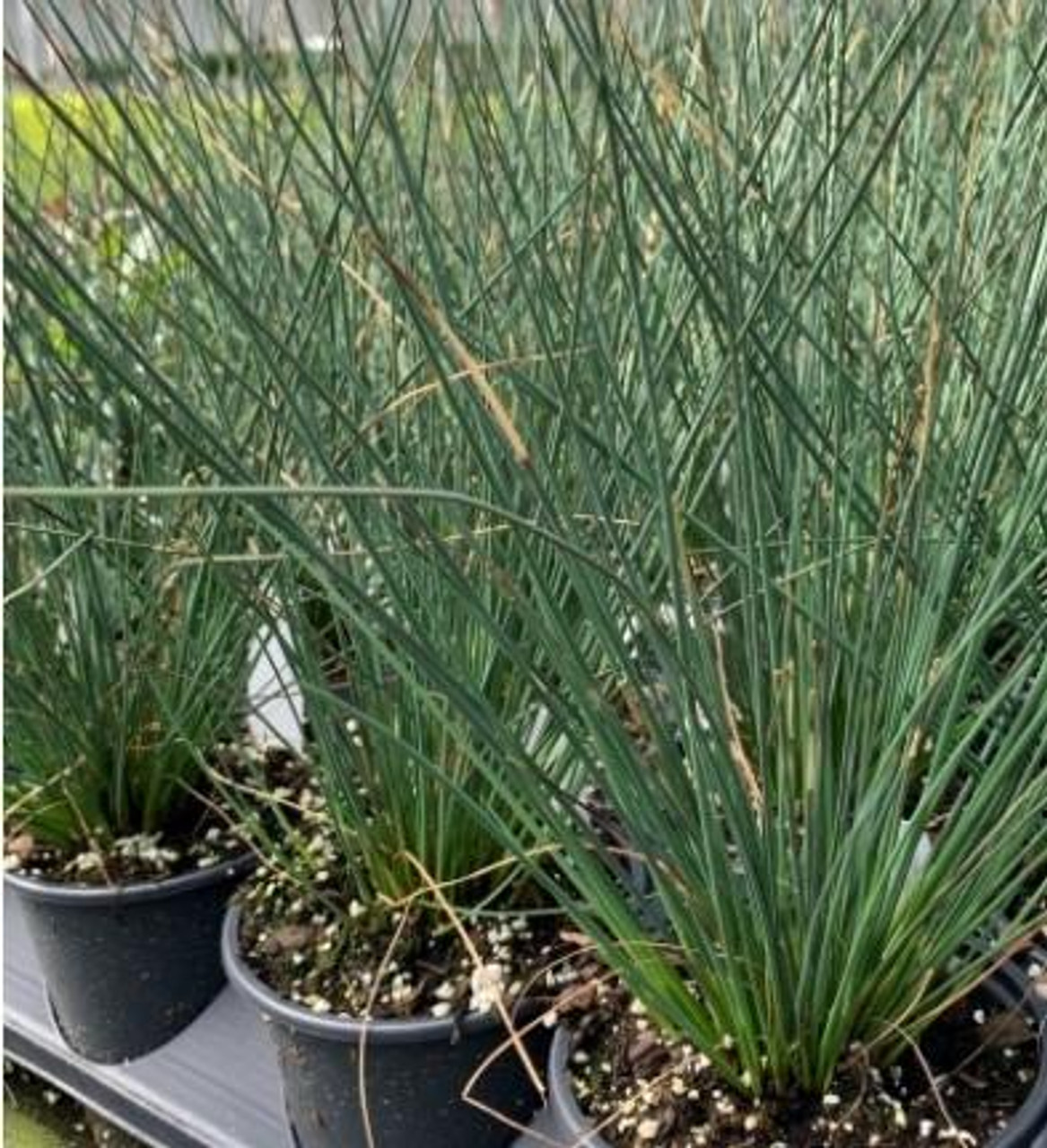Product Description
Juncus tenuis 'Blue Dart' (10)ct Quarts
Common Name: rush, Blue Rush, Poverty Rush, Path Rush
Blue-green stiff upright grasslike blades.
Best in full sun with wet or moist soil.
Plants may take time to establish but once established slowly spread by creeping rhizomes.
Zone: 2 to 9
Height: 1.00 to 1.50 feet
Spread: 0.75 to 1.00 feet
Bloom Time: May to September
Bloom Description: Green
Sun: Full sun to part shade, best in full sun
Water: Medium to wet
Maintenance: Low
Flower: Insignificant
Ground Cover, Water Plant, Naturalize, Rain Garden
Juncus tenuis 'Blue Dart' is a fantastic ornamental grass that adds a unique vertical element and a cool blue hue to gardens and landscapes. Here is a breakdown of its key features and growing requirements:
Characteristics:
- Foliage: The standout feature of 'Blue Dart' is its attractive, linear, blue to blue-green foliage. The slender, upright leaves create a vertical accent and provide texture to plantings.
- Growth Habit: This rush forms a dense, upright clump that typically reaches 12-18 inches tall and 9-12 inches wide. It slowly spreads by creeping rhizomes, forming a neat and tidy groundcover over time.
- Hardiness: Hardy in USDA zones 2-9, making it a versatile choice for a wide range of climates.
- Flowers and Seeds: While it does produce small, greenish-brown flowers in summer, they are not ornamentally significant. The plant may also self-seed in favorable conditions.
Cultivation:
- Sunlight: Thrives in full sun to part shade. It performs best in full sun but can tolerate some shade, especially in hotter climates.
- Soil: Adaptable to various soil types, including heavy clay soils. It prefers consistently moist to wet soils but also shows surprising tolerance for drier conditions once established.
- Water: Water regularly, especially during the first growing season, to establish a strong root system. Once established, it can tolerate some drought but performs best with consistent moisture.
- Maintenance: Requires minimal maintenance. It is best to cut back the foliage to the ground in late winter before new growth emerges.
Landscape Uses:
- Groundcover: Excellent for covering large areas, particularly in moist or wet locations.
- Borders and Edging: Adds a vertical element and contrasting color to garden beds and pathways.
- Water Gardens and Rain Gardens: Thrives in moist or wet conditions, making it ideal for water features and rain gardens.
- Containers: Can be used as a 'thriller' or 'filler' in container gardens, adding height and texture.
- Naturalizing: Can be planted in areas where it can naturalize and spread, providing erosion control and habitat for wildlife.
Advantages:
- Unique Color: The blue-green foliage adds a cool and refreshing touch to the landscape.
- Vertical Accent: The upright growth habit creates vertical interest and contrasts nicely with mounding plants.
- Adaptable: Tolerates a wide range of soil and moisture conditions.
- Low Maintenance: Requires minimal care once established.
- Erosion Control: Its spreading habit helps to stabilize soil and prevent erosion.
- Wildlife Habitat: Provides shelter and nesting materials for small wildlife.
Overall, Juncus tenuis 'Blue Dart' is a versatile and attractive ornamental grass that adds a unique touch to gardens and landscapes. Its adaptability, low maintenance, and tolerance for various conditions make it a valuable addition to any planting scheme.
Ten (10) plants in quart containers per flat (or tray).
Other Details
The most important part of the plant is its root system. Healthy roots are the foundation of a healthy, vibrant plant. The type of plug container used is based on the specific needs of the plants. Perennials offered as bare root traditionally perform better when planted as bare root.Planted in a specialized mix, potted plants have well established root systems. Top growth stage will vary depending on the current life cycle and time of year when shipped. In Winter and early Spring dormant plants may be shipped. Dormant plants may be planted right away, even before the last frost date.
Most bare root varieties are field grown for at least one season, though Hemerocallis and Hosta are grown for two seasons. The bulk of the soil is removed during the harvesting process and the tops of most varieties are trimmed back to the crown. They are graded, packed in shredded aspen or sphagnum moss and stored in freezers until ready to be shipped.
See our Container Sizes and Bare Root Perennials pages for more information.
Plant information and care is provided in the Overview section, Plant Genus Page and general information is provided in the Planting Care & Guides. Additional questions can be asked on each Plant page.
Plant Spacing: Using the maximum mature spread or width of a plant to guide spacing, ensures space to grow to full size. To fill an area sooner, plant them closer together. Just remember, future thinning or transplanting may be needed.
Water: Keep a close eye on newly planted perennials, especially throughout the first growing year. Most early plant loss is due to too much or too little water!



